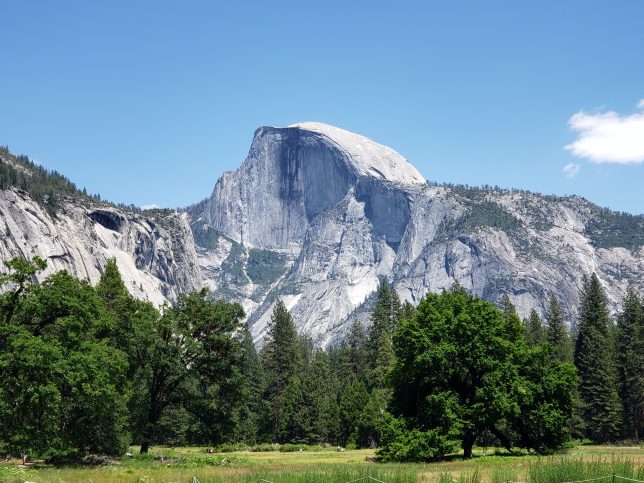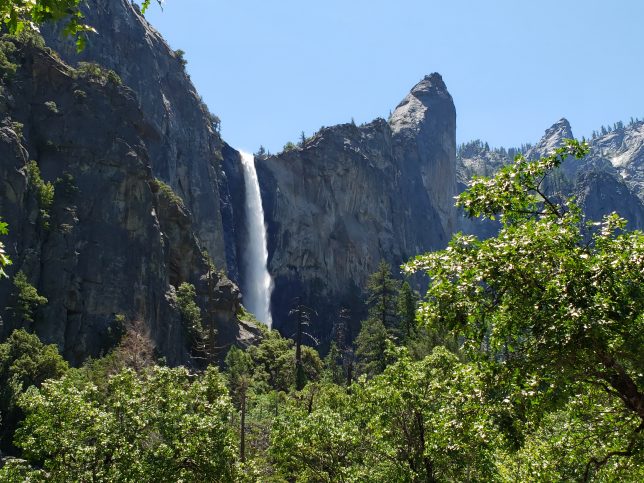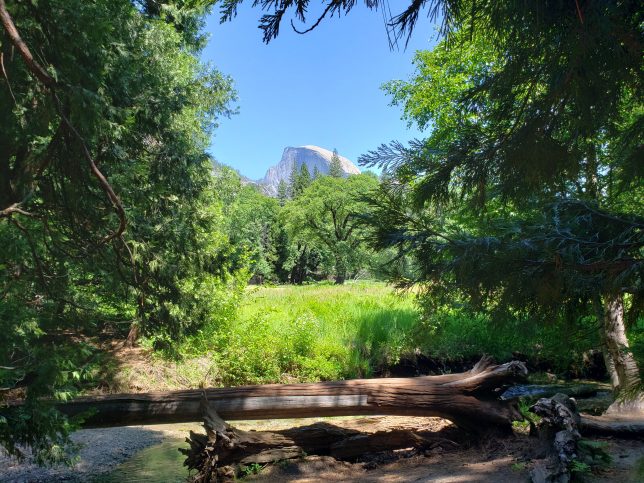
We were up at Yosemite National Park this week and noticed that it has changed since our last visit 30 years ago. Yosemite National Park remains majestic. However, it is undeniably experiencing transformations at the expense of climate change. From its cascading waterfalls to the towering sequoias and diverse wildlife, the effects of our changing climate are visible.
Warming rate
Data collected since 1895 reveal that from 1895 to 2016, the area within the park’s boundaries warmed at a rate of 1.6°F per century. This warming rate has more than doubled in recent decades, with the period from 1950 to 2010 seeing a warming rate of 3.4°F per century. Nighttime temperatures in Yosemite Valley have increased faster than average temperatures, rising by 7.6°F from 1915 to 2012. Along with rising temperatures, the park’s frost-free days increased by around 88 days from 1907 to 2012, indicating a longer growing season.
The burning of fossil fuels, deforestation, and large-scale farming have resulted in historically high levels of greenhouse gases, such as carbon dioxide and methane. These gases trap heat near Earth’s surface, contributing to global warming.
If greenhouse gas emissions continue unabated, the climate of Yosemite is projected to experience further changes over the next century. Average temperatures in the park could rise by 6.7-10.3°F between 2000 and 2100. The number of days per year with temperatures above 90°F could quadruple, and extreme weather events, including storms that historically broke 20-year precipitation records, may become far more frequent.
Emissions at the park
People love national parks and want to experience their beauty. According to the Yosemite National Park website, modern times have seen an influx of cars into Yosemite Valley. The cumulative distance traveled by visitors within Yosemite is over 80 million miles annually. This traffic not only leads to pollution and congestion but also contributes over 60% of the park’s carbon footprint.
The forests’ silent struggle
Climate change also poses significant threats to Yosemite’s sequoia trees. The warmer climate exacerbates drought conditions and increases the frequency and intensity of wildfires, both of which can stress these ancient giants.
Last year alone, in 2022, Yosemite was impacted by four significant fires. In July 2022, the Washburn Fire threatened the giant sequoias of Mariposa Grove, including the beloved Grizzly Giant, and in that same month fire officials evacuated over 6,000 people Yosemite area during the Oak Fire. One month later, in August 2022, the Red Fire burned 8,410 acres in Yosemite National Park as part of the 2022 California wildfire season.
Moreover, changing conditions are affecting the broader forest ecosystem. Rising temperatures, coupled with increased pest outbreaks, such as the pine beetle infestation, are leading to higher mortality rates among tree species. This alteration in forest composition can fundamentally transform the habitat, impacting numerous species that call Yosemite home.
Vanishing glaciers
Lyell Glacier, the largest in Yosemite, has shrunk by nearly 80% in the past century. As our planet continues to warm, glaciers in the park are predicted to disappear entirely. Glacial melt not only contributes to sea-level rise globally, but it also influences the park’s water supply, impacting both the natural habitats and human usage.
Wildlife impact
Yosemite’s rich biodiversity, from the smallest insects to the largest mammals, is also affected. Species are forced to shift their ranges to higher altitudes in search of cooler temperatures, disrupting the existing ecological balance. Some, like the pika, a small mammal adapted to the cold alpine environment, are running out of room to move higher and are at risk of local extinction.

Mission to conserve and project
“….to conserve the scenery and the natural and historic objects and the wildlife therein and to provide for the enjoyment of the same in such manner and by such means as will leave them unimpaired for the enjoyment of future generations.”
The park has mobilized its resources toward confronting climate change. Scientists from various fields work to understand the changes we witness. Their findings are shared with the public through guided programs and activities, raising awareness and prompting individual action. With around four to five million visitors annually, Yosemite is uniquely positioned to shape the narrative around global change.
Reducing carbon footprint from transportation
To reduce the carbon footprint from transportation, park managers have implemented shuttle and bus services, reducing emissions and easing traffic.
A long-standing partnership with the Yosemite Area Regional Transportation System (YARTS) provides services to and from communities around the park. Within Yosemite, free shuttles transport visitors to various destinations. As of 2020, 24 of these vehicles were diesel-electric hybrids, and two were fully electric.
Waste management
Yosemite generates over 6,200 tons of waste yearly. This waste must be transported to landfills, contributing to carbon emissions. To offset this, Yosemite recycles almost 980 tons of various materials annually, saving over 2,800 metric tons of CO2 from being released into the atmosphere. Furthermore, the park is involved in the Zero Landfill Initiative to improve trash and recycling infrastructure and education.
Green power
To decrease its carbon footprint, Yosemite installed several solar panels at the El Portal Maintenance Complex in 2010. The panels generate over 670,000 kWh of energy annually, preventing over 6,600 metric tons of carbon dioxide emissions since their installation.

The park needs our help
Although the park devotes significant resources to climate mitigation, in the context of significant environmental changes, this task becomes more challenging and the parks need help from all of us.
Efforts to reduce greenhouse gas emissions at the individual, community, national, and global levels are crucial. Sustainable practices, renewable energy, and energy-efficient technologies can play significant roles in this transition.
Learn about nature and park protection
Rangers and park partners offer visitors opportunities to learn about nature and park protection. They leverage their understanding and engage in conversations about the meaning of change in public lands. They help visitors appreciate the profound impacts of climate change, reinforcing the need for collective action.
Volunteer
Volunteer with the Yosemite National Park Service or a National Park near you to help improve and maintain trails in Yosemite Valley or your national park. Volunteering offers you the opportunity to connect with nature and enjoy the vistas, gorgeous trees, and granite walls, as you restore fragile natural resources damaged by visitors.
It is our profound hope that we act together to protect our beautiful planet and our national parks. Let’s co-create a legacy of care, conservation, and protection for future generations.
